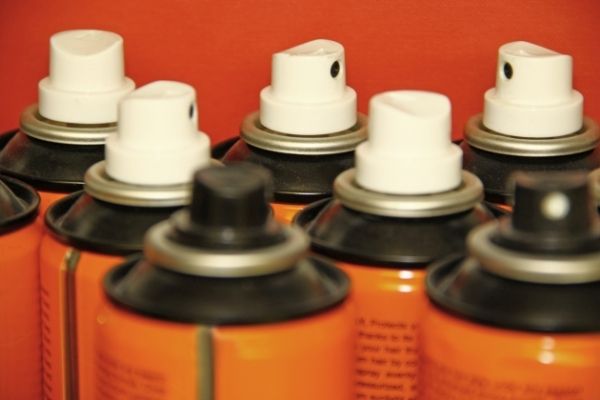We all have aerosol cans in the home. Whether it is a can of hairspray or deodorant in the bathroom, air freshener in the laundry, whipped cream in the kitchen, or many products in the garage like WD-40. The big question is, can you recycle aerosol cans?
The aerosol can achieved popularity during World War II. American soldiers were provided small, portable cans of bug spray to defend themselves against malaria-infested mosquitos.
Nowadays, aerosol cans have become the standard packaging for many industries. They contain everything from food products to paint, cleaning liquids, and even medications. It’s estimated that more than 3 billion aerosol cans are used for commercial and industrial facilities, including households, in the U.S. every year.
Want to learn how to recycle aerosol cans? Below we will explain what they are made of, how they can be safely disposed of. Plus we will show you some alternatives to help you reduce.
What Are Aerosol Cans made of?
Aerosol cans are made from either aluminum or steel. They have a plastic spray nozzle and lid.
The can contains a liquid product, like hairspray, and propellant to help propel the liquid from the can when the nozzle’s pressed. When you press the nozzle, the propellant expands, forcing liquid through a small hole in the nozzle. The liquid is dispensed as an aerosol or mist, and the propellant evaporates.
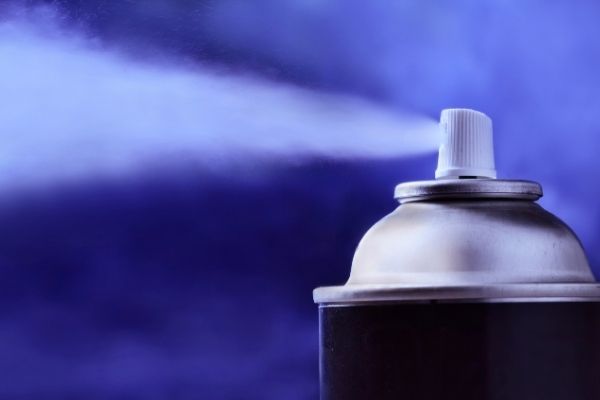
They used to use chlorofluorocarbon (CFC) as the propellant. However, back in the 1970s, it was discovered that these CFCs were destroying the ozone layer. The world banded together, and most countries banned the use of CFCs during the 1980s. A total of 191 countries signed the 1987 Montreal Protocol committing to phase out the production and use of CFCs and other ozone-depleting chemicals.
Nowadays, the propellant varies depending on the content of the can but might include nitrous oxide, carbon dioxide, or hydrocarbons like propane and butane.
These gases may not deplete ozone, but that doesn’t mean they are good. These gases are known to contribute to global warming. Every time you push the button on your hairspray can or bug spray, you are releasing these hydrocarbons or other gases into the atmosphere.
Below we will provide some alternatives to help you reduce your use of aerosol cans around the home.
Common Aerosol Products
Types of aerosol cans include:
- Whipped Cream
- Bug spray
- Sunscreen
- Deodorant or perfume
- Shaving cream
- Air freshener
- Hairspray
- Spray paint
- Surface cleaners
- WD-40
- Tire shine
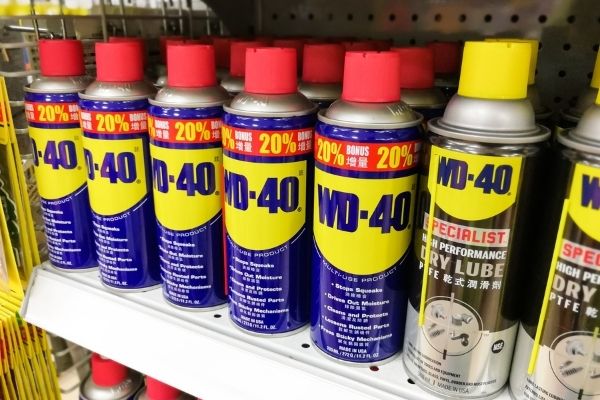

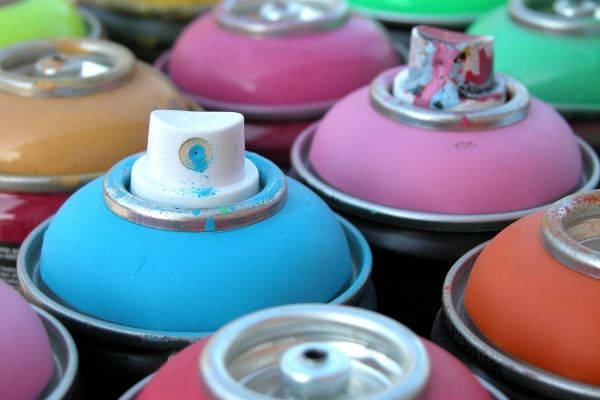
Can You Recycle Aerosol Cans?
Aerosol cans are made from metals, so they are a good candidate for recycling. The metals in the can are aluminum or steel and are infinitely recyclable. However, there are some safety concerns to be aware of.
How to Dispose of Aerosol Cans?
1. First, check what local recycling programs are available to you
It is important to check the rules in your local area and what programs are available to you. Many local authorities are now accepting EMPTY aerosol cans in the curbside recycling bin. For full cans, many also run household hazardous waste collections.
If you do not have a program available, you can try your local scrap metal yard.
2. Check the contents of the aerosol can
If the can contains a hazardous material, then dispose of it in a household hazardous waste program.
Most local authorities have programs for drop-off or collection of household hazardous waste. Check your local area for a program.
If you are not sure whether it is hazardous, check with your local authority. There is no harm in taking a non-hazardous material to the hazardous waste drop-off but disposing of a hazardous material incorrectly can have serious consequences.
3. Empty the Aerosol Can
If the contents are not hazardous but the can is full, or even half full, you have two options. You can either dispose of it along with your household hazardous waste or empty the remaining liquid so that it can be recycled. Many local recycling collections include empty aerosol cans, so contact your local service to check.
If the can contains non-hazardous material like hairspray or cream, you can empty it into a sink or appropriate place. By shaking the can, you will be able to hear any remaining liquid inside.
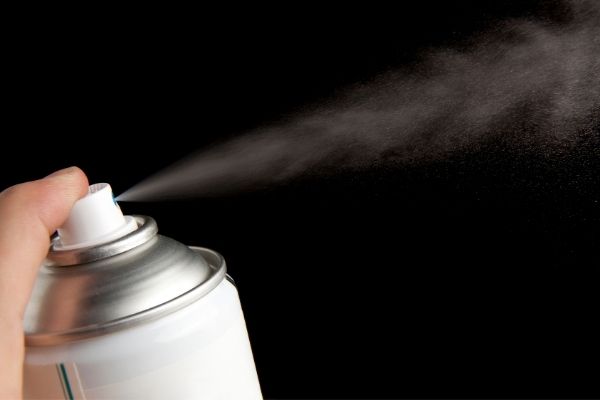
4. Place the Empty Aerosol Can in Your Recycling Bin
Remove the plastic lid and place the empty aerosol can in your curbside recycling bin. Do not squash it or pierce it in any way. The plastic lid can go into your curbside recycling as it is a rigid plastic and is large enough to be picked up by the machines.
Safety first reminders:
- DO NOT RECYCLE AN AEROSOL CAN THAT IS FULL. It can explode and injure workers or damage equipment. If your aerosol can is still full, then look for household hazardous waste programs in your area.
- DO NOT PUT FULL AEROSOL CANS IN THE TRASH. Aerosol cans do not belong in landfill.
- DO NOT ATTEMPT TO MODIFY THE CAN. Don’t try to put a hole in the can or crush it. Depending on the propellant, this can be quite dangerous, with a high risk of it exploding.
Why Recycle Aerosol Cans?
Recycling your aerosol cans helps to reuse resources that have already been extracted from the earth. This saves energy, resources and reduces pollution and carbon emissions associated with the extraction of raw materials. The metals used in the cans can be recycled repeatedly, so don’t let them go to waste in landfills.
Reduce and Reuse
If you are concerned about aerosol cans, there are plenty of available options.
- Using refillable containers that use compressed air as a propellant where available.
- Use natural cleaners like vinegar for odor removal. Or make your own air freshener.
- Use a pump-spray container or refillable spray bottle where possible.
The opportunities for reusing aerosol can are limited, however. If you have spray paint cans, you might check with a local community or school group to see if they might use them.
What Are They Made Into?
Once collected, aerosol cans are carefully punctured by specially designed machines. The different types of metals are then separated and recycled. The metal in aerosol cans is used to make many new products, from car parts to new aluminum cans.
Wrap Up
Now that you know you can recycle aerosol cans, be sure to check the rule of your local area. The right way to dispose of aerosol cans starts with knowing what was in the can and if it is empty or not. Empty cans can go in your recycling bin. Full cans should be emptied if they are non-hazardous or otherwise disposed of through a household hazardous waste program.
Over 3 billion aerosol cans are produced in the U.S. and 600 million in the UK every year. That’s a lot of metal that can be recycled. Better still, why not look at ways you can reduce your use of aerosol cans altogether. There are plenty of alternatives available nowadays.
Want to learn about other everyday items and if they can be recycled. Please take a look at our articles on egg cartons, milk cartons, shredded paper, or pringle cans.
Sources
- Aerosol Spray, Wikipedia
- Scientific American, 2008, Bad Hair Day: Are Aerosols Still Bad for the Ozone Layer?
- EPA, Increasing Recycling: Adding Aerosol Cans to the Universal Waste Regulations


